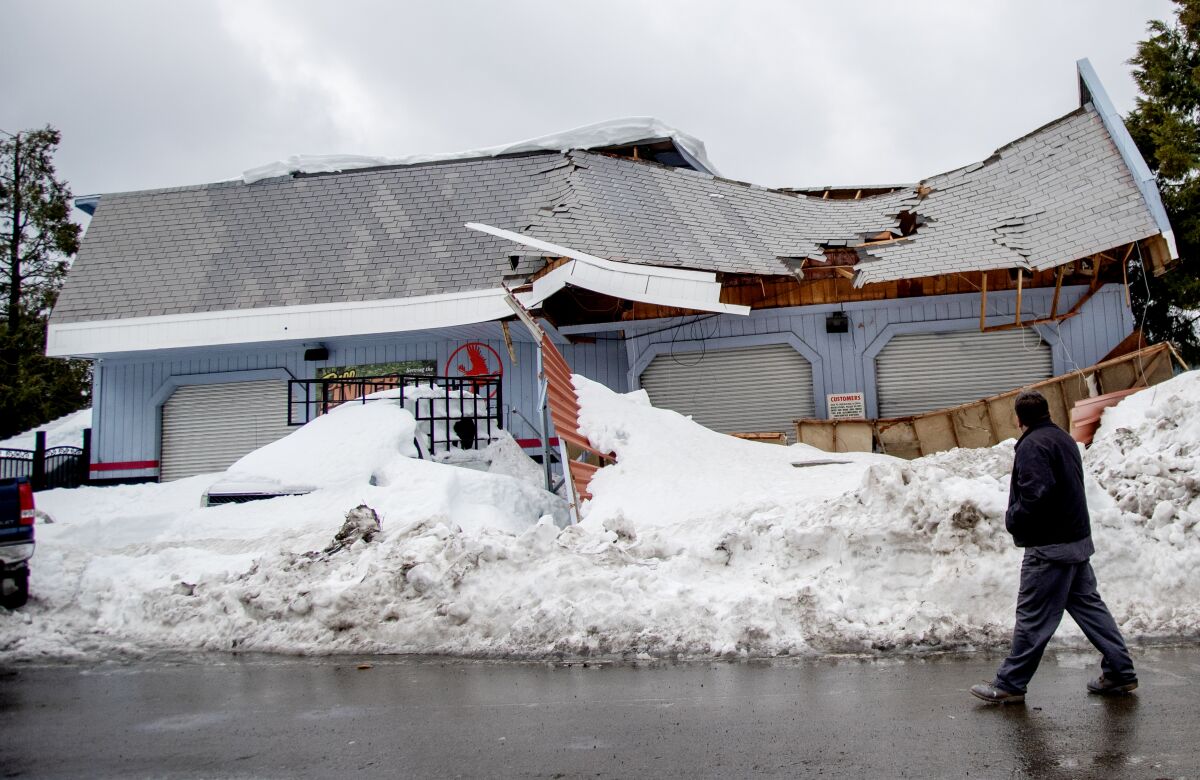Good morning, and welcome to the Essential California newsletter. It’s Tuesday, March 7.
Nearly two weeks after historic winter storms hit Southern California, some mountain residents remain stranded and waiting for help.
More than 100 inches of snow fell in the San Bernardino Mountains over the past several days alone, adding to feet of snow that has blocked off roads in and out of communities and hindered efforts to deliver vital supplies and medical aid.
The snowstorms have passed, but now there’s a growing swirl of frustration as residents continue to wait for help — some for more than 10 days — as they run low on food and medicine.
My colleagues Nathan Solis, Summer Lin and Robert J. Lopez have been covering the “snow siege” and write:
The slow pace of clearing roads has become a source of growing anger in mountain communities. Making matters worse, residents have endured gas leaks, fires and roof cave-ins due to the snow, and authorities have struggled to give aid.
Gov. Gavin Newsom declared a state of emergency last week for San Bernardino and several other counties hit hard by severe winter weather.
A variety of state and local agencies have crews assisting in efforts to clear roads and get to residents in need, using hand shovels in some cases, but also machinery like road graders, front-end loaders, dump trucks, snowplows and snow blowers. The California National Guard is also in the mountains helping with relief efforts, according to Newsom’s office.

Volunteers are also stepping up to help, like Crestline resident Max Strawn. He told Times reporters this weekend that he waded through waist-high snow to get groceries to people with disabilities and elderly residents in the area.
“These are only the ones we know about,” he said. “I know there’s people we’re missing.”
Efforts by one nonprofit to bring supplies in by helicopter were shut down Friday by county officials, who cited safety concerns.

A collapsed roof on a business in Crestline shows the impact of the snowstorm. (Gina Ferazzi / Los Angeles Times)
So what’s behind the delays?
Officials in San Bernardino County have said they were unprepared for the back-to-back winter storms that dropped up to 12 feet of snow in mountain towns. Blizzard warnings, which had not been issued in nearly 35 years, went out within 36 hours of the storms hitting the mountains, which officials said did not give them enough time to obtain the equipment they needed.
The usual snowplows couldn’t handle the historic levels of snowfall. Over the last week, Running Springs received 12 feet, Big Bear Lake 11 feet and Lake Arrowhead a little over 9 feet, the National Weather Service reported.
On Monday afternoon, regional Caltrans officials announced that certain routes would be reopened for residents only.
“At this time, if you are a nonresident, please visit the mountains when conditions have improved,” officials wrote on Facebook. “We ask for your cooperation in giving local communities time to clean-up, recover and make progress in their areas before your visit.”
No comments:
Post a Comment